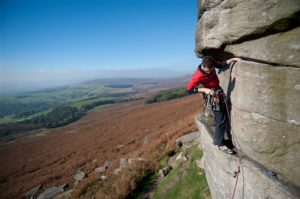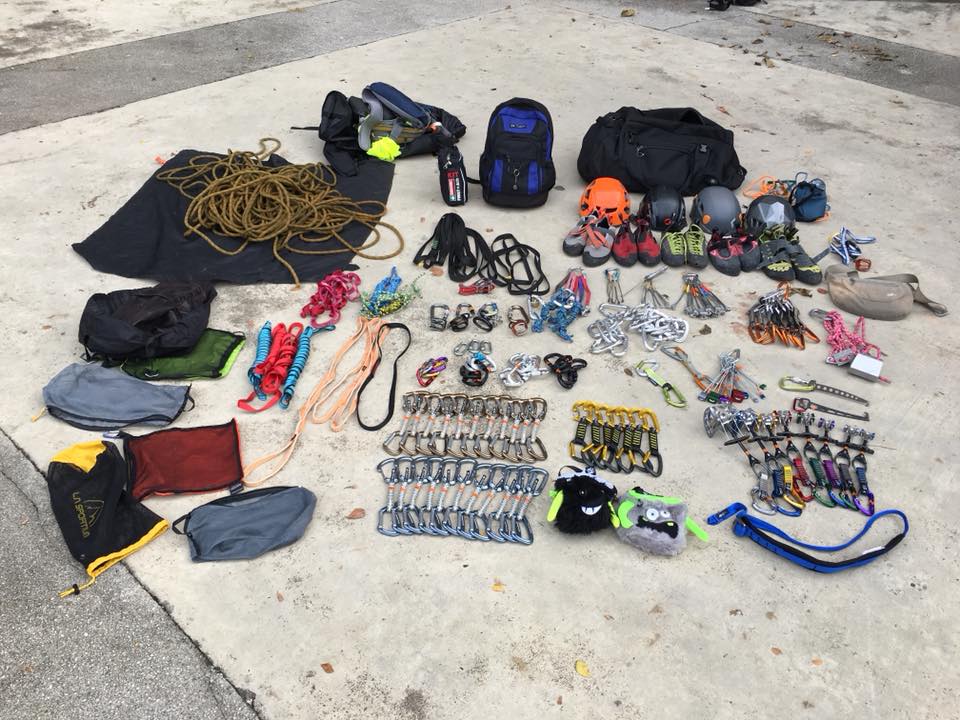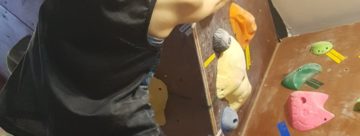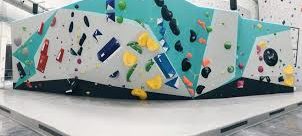
1) Trad Climbing
Also, know as traditional climbing, is a form of climbing where the anchors are placed by the climber on the way up rather than being pre-setup beforehand. Sports Climbing introduces bolted-in anchor points that make up the route whereas Trad Climbing anchors can be placed at any point deemed fitting as and when required by the climber.
2) Differences between Sports Climbing and Trad Climbing
Placing a quickdraw on a sports route requires correct technique to ensure the fastest clip in timing so as to allow your drawing hand to hold back the wall before your supporting hand drains too much energy.
In Trad Climbing, however, the process is much more delicate and requires more patience, skill, knowledge and some amount of luck (mostly good). The climber will be using different forms of fall protection devices to set up a protection point followed by placing a runner and/or quickdraw before clipping in.
Although it is just 1 additional step, placing a protection device takes experience and time to get the strongest and most positive fit. A poorly placed protection is equivalent to not placing one at all.
3) Gear Used
Early climbing enthusiasts used very traditional methods to place protection. Some examples of such equipment are Pitons; Angled Pieces of reinforced metal shards with an anchoring hole to attach a runner or quickdraw to. These early pieces of protection required the climber to bring a Piton Hammer to hammer these things into a crack or crevice in the wall as a protection point.
Nowadays, new and more environmentally friendly forms of protection have been introduced, such as Wired Stopper Nuts, Wired Hexcentrics, Active Cams, and Tricams.
Stoppers and Hexcentrics are soft metal Wedges used to wedge into flared cracks and bite into the rock in the event of a fall. Placed properly and these are the strongest anchors possible.
Cams are known as Active protection devices as there are moving parts used. They are activated by releasing the trigger once the cam is in place to bite onto the rocks. Any force outwards will apply more biting force creating a strong and solid anchor.
Tricams are Passive protection devices that are versatile. They can be used as wedges just like Nuts and Hexes. Flipped around, they can be used as a passive Camming Device that bites onto the rock just like a Cam.
In addition to all these gear, the climber will need to judge the number of quickdraws and runners he/she will need to finish the route, along with minimally 2 sets of protection devices ranging from different sizes ideally. So while a Sports Climber would carry 12 quickdraws up a standard 15m route, a Trad Climber climbing the same height would need for example:
- 12 quickdraws
- 2 Sets of Wired Stopper Nuts for flared cracks
- 1 Set of Wired Hexcentrics for larger cracks
- 1 Set of Cams for parallel flareless cracks
- Runners to extend the protection outwards
- 1 Nut/Hex removal tool
- And most importantly, a Personal anchor.
While the number of each set and individual piece of protection may vary from different climbers, the rough quantity and weight of equipment required are always more than doubled compared to sports climbing.
4) Placing Protection
So you have all the gear you need, but how do you place your protection? Trad climbers need to have the patience and accuracy in placing their protection in order to get the strongest hold and “bite” into the wall in case of a fall. Not all cracks will fit your protection devices, and having a full range of protection devices does not mean 1 will definitely fit the bill.
When placing a protection, the things to consider are:
- Surface Contact
- Orientation and Direction of Pull
- Rock Quality
You want the piece of protection to have the best fit by giving it as much surface contact as possible, hence the wide range of sizes provided. The orientation should not cause the protection to come off in the event of a fall. The direction of pull should Ideally be mostly Downwards, Slightly Outwards. Finally and most importantly, the quality of the rock must be inspected before placing the protection.
5) Rock Quality
As mentioned above, the rock quality is everything in traditional climbing. A good quality rock will give you the most confidence when taking a fall or when hanging on to shake off that lactic acid buildup.
Poor quality rocks are always ever present due to the nature of corrosion. A well-placed anchor/protection in bad quality rocks will result in a total or catastrophic failure in the protection system. It is always good to feel and test the rigidity and feel of the rocks before placing a protection device. After placement, always give a good tug in the direction of the fall which would be mostly Downwards and slightly Outwards.
6) Cleaning Up
Congrats! You have reached the top of the climb, you have set up your anchor and you are ready for your descent.
On the way down, you will need to keep each and every one of your protection devices (Especially your Cams!). Try to recall how each placement went in and work your way backward to get the protection to come off. Using a Nut tool, you can give Stoppers, Hexcentrics, and Tricams a nudge in the opposing direction of a fall to get them to disengage their grip on the rock. For Cams, remember that once you pull the trigger they will come off, so make sure you have a good grip on them before squeezing that release trigger!
Traditional Climbing is much more complex and a lot more work than compared to Sports Climbing, but the thrill and joy of climbing remains the same and the experience gained from each Traditional Crag climb will likely linger in your memory much longer than any Sport Climbing routes. Just remember to always study the route well, place your protections properly, check for the quality of the rocks and remember to leave nothing behind.
“Leave nothing but footprints, Take nothing but Pictures.”







